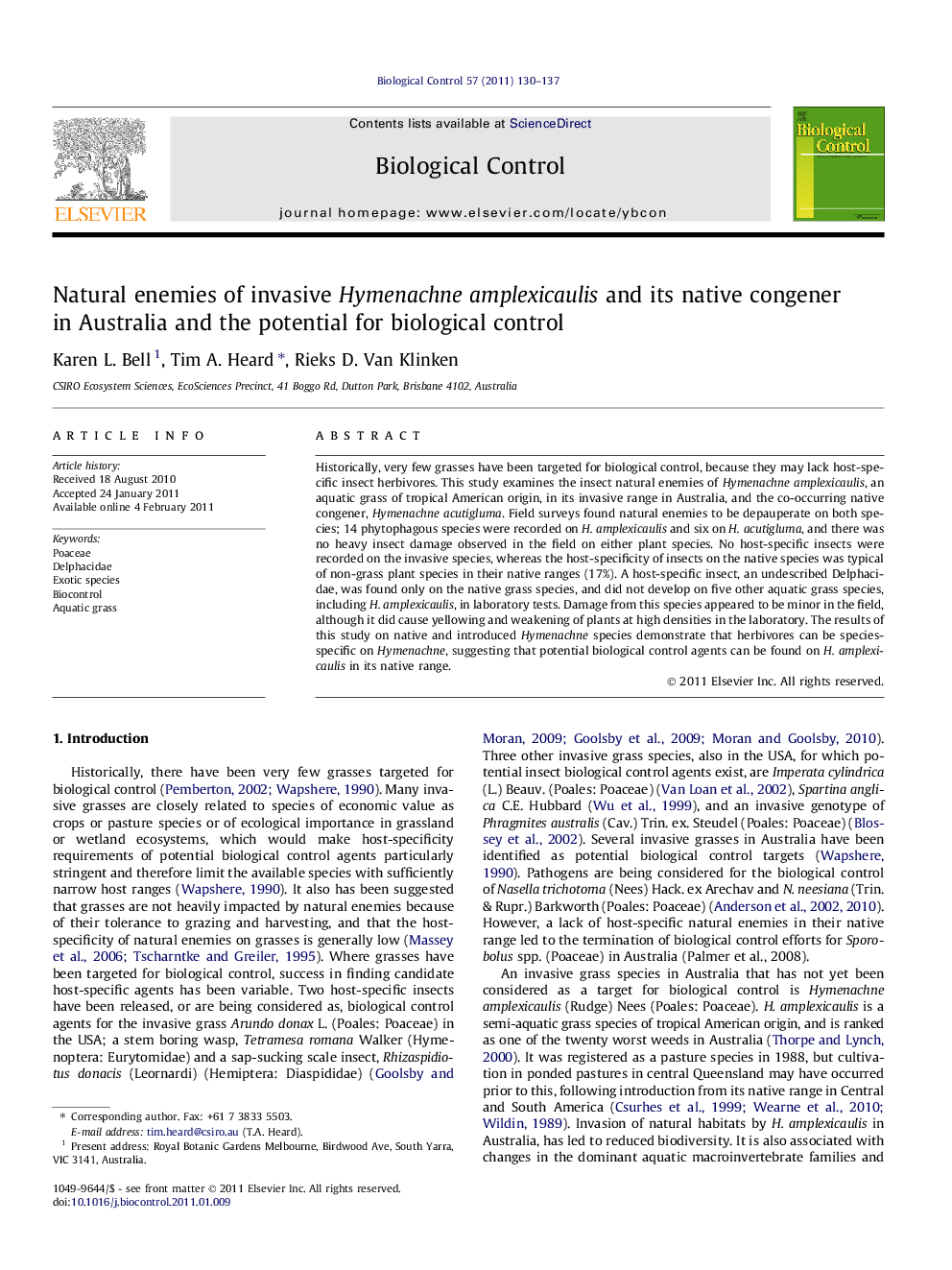| کد مقاله | کد نشریه | سال انتشار | مقاله انگلیسی | نسخه تمام متن |
|---|---|---|---|---|
| 4504209 | 1321078 | 2011 | 8 صفحه PDF | دانلود رایگان |

Historically, very few grasses have been targeted for biological control, because they may lack host-specific insect herbivores. This study examines the insect natural enemies of Hymenachne amplexicaulis, an aquatic grass of tropical American origin, in its invasive range in Australia, and the co-occurring native congener, Hymenachne acutigluma. Field surveys found natural enemies to be depauperate on both species; 14 phytophagous species were recorded on H. amplexicaulis and six on H. acutigluma, and there was no heavy insect damage observed in the field on either plant species. No host-specific insects were recorded on the invasive species, whereas the host-specificity of insects on the native species was typical of non-grass plant species in their native ranges (17%). A host-specific insect, an undescribed Delphacidae, was found only on the native grass species, and did not develop on five other aquatic grass species, including H. amplexicaulis, in laboratory tests. Damage from this species appeared to be minor in the field, although it did cause yellowing and weakening of plants at high densities in the laboratory. The results of this study on native and introduced Hymenachne species demonstrate that herbivores can be species-specific on Hymenachne, suggesting that potential biological control agents can be found on H. amplexicaulis in its native range.
Figure optionsDownload as PowerPoint slideResearch highlights
► Fourteen insects were recorded on invasive Hymenachne amplexicaulis and six on native Hymenachne acutigluma in Australia.
► No host-specific insects were recorded on the invasive species.
► One insect species of 6 (17%) on the native grass appears to be host specific at the species level.
► Species-specific insects may be expected on H. amplexicaulis in its native range.
Journal: Biological Control - Volume 57, Issue 2, May 2011, Pages 130–137